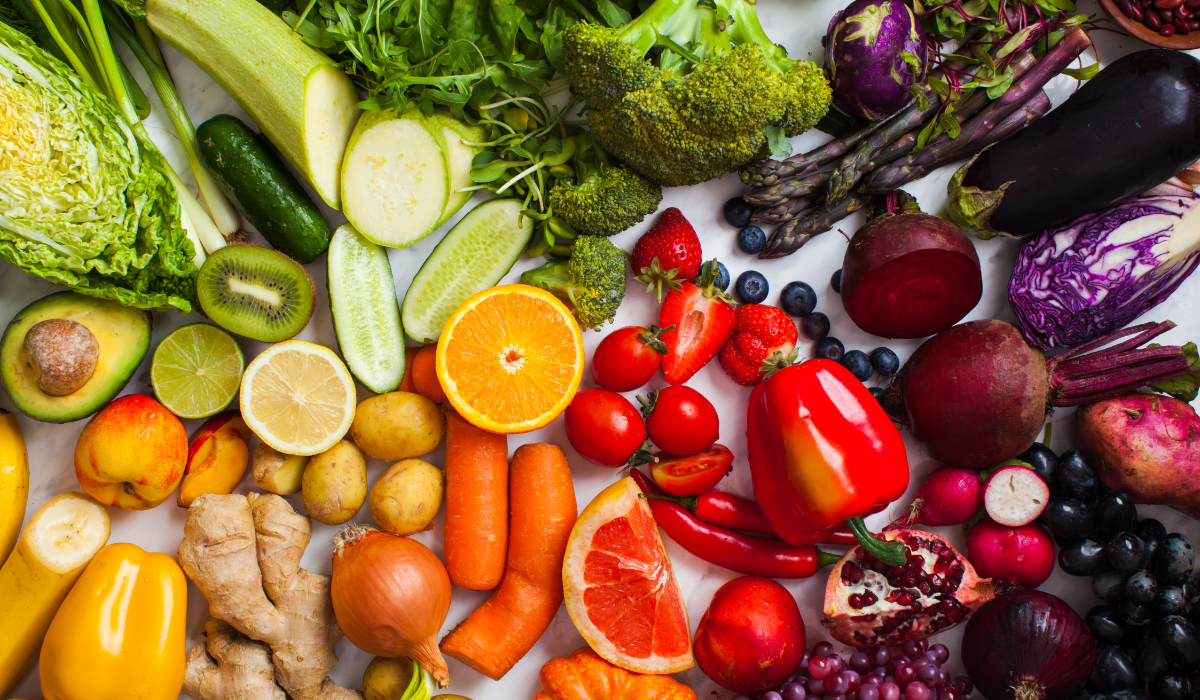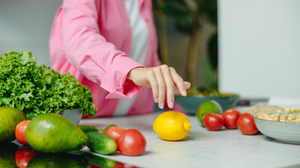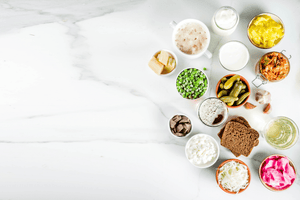
It might seem obvious that fruit and vegetables would be a key ingredient in our children’s nutrition to help support their overall vitality. It is also essential for their gut health, specifically the gut microbiome, which refers to the trillions of microbes that live in the gut. The gut microbiome is at its most dynamic in the earlier and formative years so this is the optimum time we can enrich our kids’ microbiomes to positively flourish.
We can help build the foundations for a healthy and happy gut by encouraging children to eat a wide variety and plentiful amount of colourful plants, hence the ‘Eat the Rainbow’ analogy. Including a vibrant array of fruit and vegetables provides myriad sources of fibre and special chemical compounds found in plants called ‘phytochemicals’ that are also super beneficial for gut health. These same compounds are often the pigments that give plants their colour - think beta-carotene in carrots and sweet potato, anthocyanin in blueberries and lycopene in tomatoes to give you a few examples.
Depending on your little one’s taste preferences it might be easier or trickier to convince them to eat fruit and vegetables. Regardless of their personal preferences the analogy of ‘Eating the Rainbow’ can make it feel fun and interactive which means they can be more inclined to eat them. This is where an ‘Eat The Rainbow’ chart can be a really brilliant tool so they can have a visual representation of ticking off fruit and vegetables according to their colours.
With this in mind, Bimuno has created a beautiful chart that you can download here and display somewhere in full view for the kids to see.
Below are the groups of colours and some foods for you to keep in mind. You can add in more and more as you go along, as the more diversity the better!
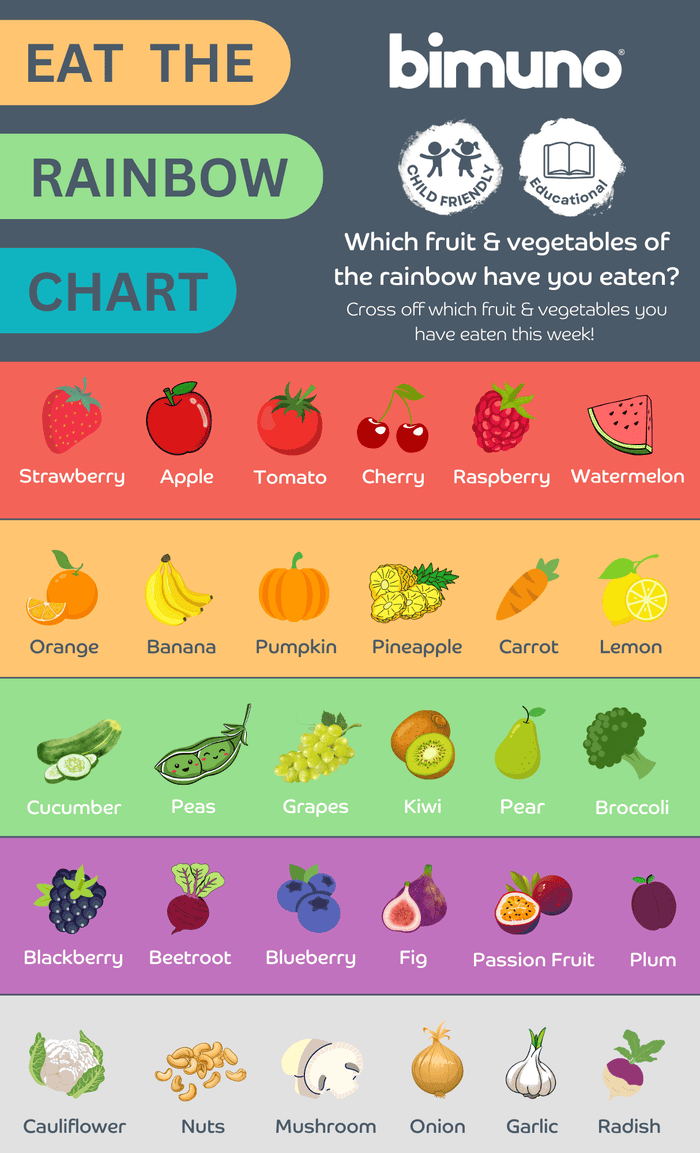
Red - Raspberries, strawberries, tomato, watermelon, cherries, red peppers
Orange/Yellow - Carrots, sweet potatoes, peaches, lemons, pineapple, bananas
Green - Avocado, broccoli, kale, asparagus, spinach, peas, kiwi, leeks, sugar snap peas
Purple/Blue - Blackberries, blueberries, aubergine, figs, plums, purple grapes, red cabbage
White – Cauliflower, nuts, onions. garlic, radishes, mushrooms, parsnips
Some of my other tips to encourage colourful eating could include…
Apples are a great prebiotic food source and stewing them makes the pectin fibre more accessible to gut microbes. Add in some ground cinnamon and a drizzle of good quality honey and give them a more enticing name like ‘Cinnamon toffee apples’ for example.
Sweet potatoes can often suit children’s taste buds especially when they are made into wedges or fries and these are super high in phytochemical content.
Store blueberries in the freezer as this seems to heighten their flavour - they're healthy frozen sweets that kids will love!
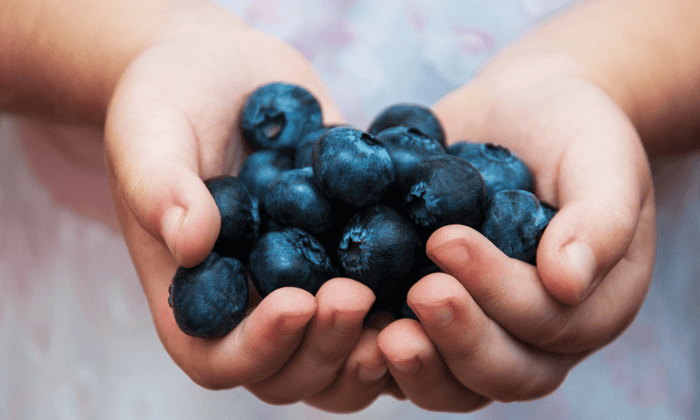
Make up a natural yogurt bowl with colourful fruits
Blend mashed potatoes with parsnips to increase your child’s fibre content. It is not colourful per se but it is fibre rich and gives a delicious sweeter flavour.
Smoothies are a great way of getting multiple fruit and veg into one cup. Involving your kids in the prep of making smoothies can help them gain confidence in the kitchen and comfort in consuming healthier food.
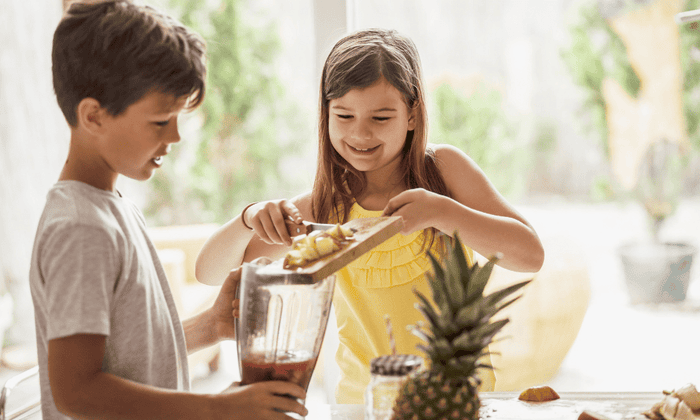
Swap some of the beige snacks for colourful plant based options - apple slices with almond butter, carrot sticks dipped in hummus or a bowl of mixed berries could be some tasty, healthier, colourful foods.
Fruit and veggie rainbow skewers that kids can build themselves is really interactive and chances are they want to try their own creations.
Include foods and dishes that are already familiar like spaghetti bolognese and make half with lentils for extra fibre. Add in colour to children’s meals with a few finely chopped carrots and tomatoes.
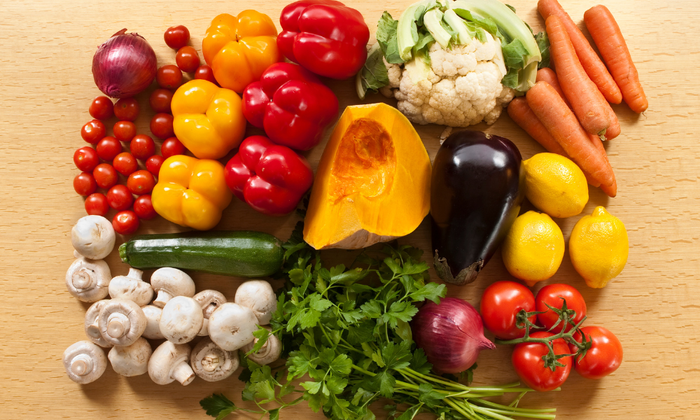
Children are imaginative, why not try giving the gut microbiome a nickname like ‘Bob’ and tell your children it is a pet living inside each of our tummies and it needs feeding with plenty of rainbow foods to keep it smiling.
REFERENCES
Fraga CG , Croft KD , Kennedy DO , Tomás-Barberán FA . The effects of polyphenols and other bioactives on human health. Food Funct. 2019 Feb 20;10(2):514-528. doi: 10.1039/c8fo01997e. PMID: 30746536.
Hojsak I, Benninga MA, Hauser B, Kansu A, Kelly VB, Stephen AM, Morais Lopez A, Slavin J, Tuohy K. Benefits of dietary fibre for children in health and disease. Arch Dis Child. 2022 Nov;107(11):973-979. doi: 10.1136/archdischild-2021-323571. Epub 2022 Mar 11. PMID: 35277379; PMCID: PMC9606532.
Ihekweazu FD, Versalovic J. Development of the Pediatric Gut Microbiome: Impact on Health and Disease. Am J Med Sci. 2018 Nov;356(5):413-423. doi: 10.1016/j.amjms.2018.08.005. Epub 2018 Aug 21. PMID: 30384950; PMCID: PMC6268214.
Kumbhare SV, Patangia DVV, Patil RH, Shouche YS, Patil NP. Factors influencing the gut microbiome in children: from infancy to childhood. J Biosci. 2019 Jun;44(2):49. PMID: 31180062.
Ronan V, Yeasin R, Claud EC. Childhood Development and the Microbiome-The Intestinal Microbiota in Maintenance of Health and Development of Disease During Childhood Development. Gastroenterology. 2021 Jan;160(2):495-506. doi: 10.1053/j.gastro.2020.08.065. Epub 2020 Dec 8. PMID: 33307032; PMCID: PMC8714606.
Fraga CG , Croft KD , Kennedy DO , Tomás-Barberán FA . The effects of polyphenols and other bioactives on human health. Food Funct. 2019 Feb 20;10(2):514-528. doi: 10.1039/c8fo01997e. PMID: 30746536.

Related Articles

